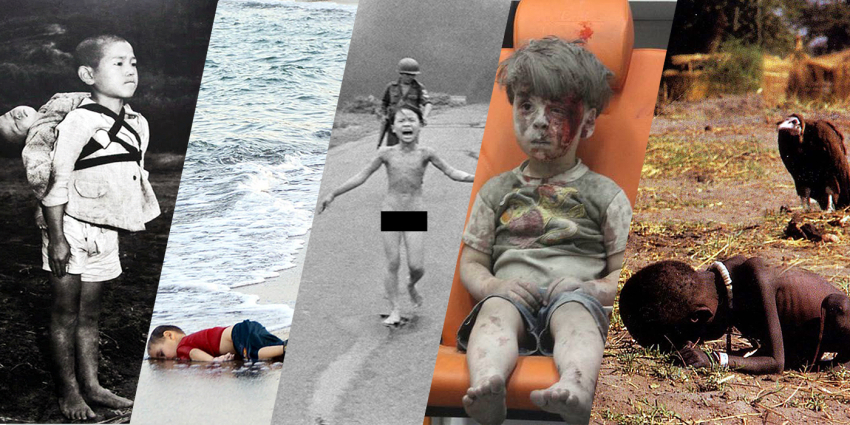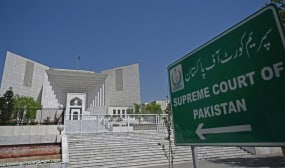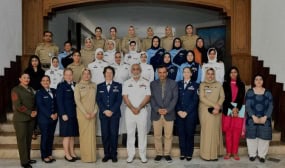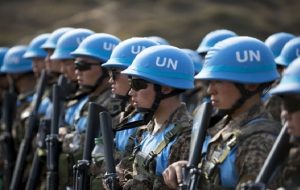LAHORE (Ali Zain) – These days everyone is discussing the picture of a 5-year-old Syrian boy who was luckily pulled from the rubble of a hospital in Aleppo following an airstrike which had demolished the building.
Photojournalist Mahmoud Raslan, who captured the iconic picture, said that the boy was named Omran Daqnee. He rescued along with his siblings and parents from the damaged building on August 17, 2016.

The powerful photograph is being circulated online to highlight to the plight of Syrians amid the unstoppable ongoing war among the rebels, President Bashar al-Asad, the Islamic State militant group and the world powers.
This is not the first time when an extraordinary picture has become so impactful. Last year, as well, the picture of the dead body of Syrian boy Alan Kurdi – initially reported as Aylan Kurdi – had jolted the whole world.
The strongest image of 3-year-old Syrian boy which showed his body lying on a beach in Bodrum, Turkey, was captured by Dogan News Agency’s Nilufer Demir.

It was published on September 2, 2015 and immediately attracted millions of people around the world. The picture effectively portrayed the sufferings of the Syrian refugees trying to cross the Mediterranean sea to flee the war-torn country.
As a result, the European countries moved to allow Syrian refugees enter their lands. The European Union held long deliberations on the refugee crisis and opened the borders.
Another picture titled “The vulture and the little girl” shocked the global community on March 26, 1993. It showed a little girl while struggling to reach a nearby United Nations feeding center, while a vulture had landed just behind her.

The picture was taken by journalist Kevin Carter near the village of Ayod, Sudan and published by the New York Times for the first time. Carter said that he had waited for twenty minutes to capture the picture until the vulture was close enough to the girl.
After the picture was published, the NY Times and the photographer were criticised by the public and the newspaper ultimately had to publish an editorial note.
The photographer won Pulitzer Prize for the picture in 1994 and also committed suicide in the same year.
On June 8,1972, Associated Press photographer Nick Ut took a picture of Kim Phuc, showing the 9-year-old naked girl yelling and running away from her village napalm-bombed by American Army near Saigon, South Vietnam.
The New York Times initially hesitated to consider publishing the picture due to nudity, however, it was later allowed.

The picture was declared World Press Photo of the Year for 1972 and the photographer also won Pulitzer Prize in the same year.
Afterwards, the girl, Kim Phuc, disclosed that she was yelling “Nóng quá, nóng quá (too hot, too hot)” in the picture.
The picture of two brothers, one carrying other’s dead body, on his shoulders to the cemetery, caught the attention of the world in 1945. It was captured near Nagasaki, just days after the US had dropped nuclear bomb on the Japanese city.
Joe O’Donnell took the photo when he was sent to Nagasaki by the US military officials to record the damages caused by the atom bomb. He witnessed the devastating conditions on the ground during the seven-month-long stay in Japan.
The iconic picture was termed as the most horrific one by the people after it was published after the World War II ended.

The photographer, in an interview with Japanese media, disclosed the details about the picture: “I saw a boy about ten years old walking by. He was carrying a baby on his back. In those days in Japan, we often saw children playing with their little brothers or sisters on their backs, but this boy was clearly different. I could see that he had come to this place for a serious reason. He was wearing no shoes. His face was hard. The little head was tipped back as if the baby were fast asleep. The boy stood there for five or ten minutes.”
“The men in white masks walked over to him and quietly began to take off the rope that was holding the baby. That is when I saw that the baby was already dead. The men held the body by the hands and feet and placed it on the fire. The boy stood there straight without moving, watching the flames. He was biting his lower lip so hard that it shone with blood. The flame burned low like the sun going down. The boy turned around and walked silently away.”














